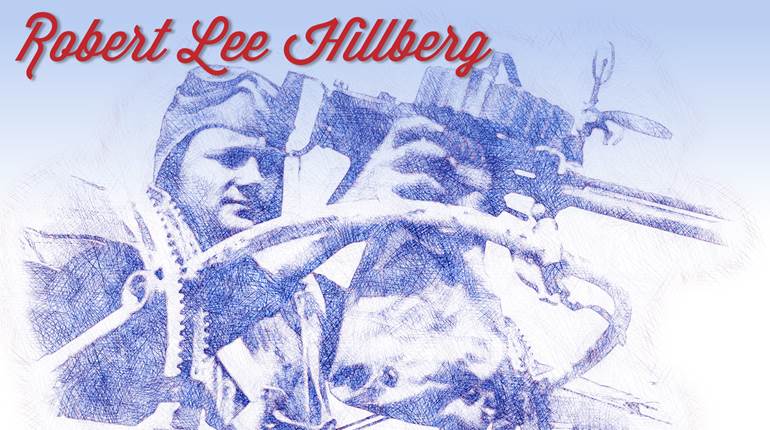
Alexander McCormick Sturm was born April 26, 1923 in Chicago, Ill., son of sculptor, author, and Yale football star Justin C. Sturm and Katherine “Kit” McCormick Sturm. Alex had a younger brother, Justin Cornelius “Dusty” Sturm, Jr. Dusty’s ambition was to grow up to be a truck driver. Friends and family knew him as "Alex" or "Sandy." As a writer and artist, he was recognized for his two published books, The Problem Fox and From Ambush to Zig Zag. In a review from the October 1941 New York Times, The Problem Fox was described as marvelous, as well as a little masterpiece. Sturm’s illustrations were featured throughout both publications. His books crossed the line between children’s and adult literature. Sturm attended a private boy’s school at Avon Old Farms School and Yale University. His illustrations appear throughout his 1939 and 1940 high school yearbooks. After World War II, in 1947, he produced cartoons for the Saturday Literature Review magazine. Sturm co-authored a book, Suffer Little Children with Ray Murphy in 1947. That book never went into publication.
Born to a well-to-do family, Sturm was accustomed to a lavish lifestyle. A classmate at Yale defined Sturm as one who likes to dine at the finest restaurants while other students would eat at the school cafeteria. Another classmate remarked, “His clothes were all custom-tailored. He was a voracious collector of guns, canes, swords and heraldry.” Columnist Charles Bartlett, who attended Yale at the same time as Sturm, made this observation, “You would get the feeling that he did not give a damn about what anyone thought about the way he dressed. He had the marks of a very authentic individual.” Another Yale student noted, “There was no question about Alex’s intelligence; I’d place his IQ at slightly higher than Einstein’s. One of the definitions of genius is eclectic knowledge. He had knowledge of heraldry and a great knowledge of Egyptian history. He had too many talents in too many different directions at too young an age.” Sturm’s major at Yale was art. He had a stocky build and was pale-skinned, preferring the indoors to outside activities. In spite of his preference to indoor activities, he was a member of the Yale polo team.

During World War II, Sturm was an officer with the Office of Strategic Services (OSS) in Washington D.C. The OSS was the predecessor of today’s CIA. Sturm was not able to serve in the regular military because he suffered consistent asthmatic attacks. He had a top-secret assignment (at OSS) as a liaison with an ex-Hitler associate Ernst Franz Sedgwick Hanfstaengl. Hanfstaengl had been a member of the Nazi party and friend and confidant of Adolf Hitler. He had personal information on more than 400 Nazi leaders. Sturm had known Hanfstaengl prior to the war and would endeavor to predict Hitler’s wartime activities and personal habits.

Sturm married Paulina Longworth in 1944. Paulina was the daughter of Nickolas and Alice Roosevelt Longworth. Nickolas Longworth was a congressional representative and speaker of the house from 1925 to 1931. Alice was the eldest child of President Theodore Roosevelt. News of the young couple’s wedding and prior engagement was featured in hundreds of newspapers across the country. Alice Longworth was one of the most publicized women in the world, and many of those articles were about her and not the newlyweds, and it was known that she did not agree with the match. Alex and Paulina had one daughter, Joanna Mercedes Alessandra Sturm, born in 1946. The couple lived in Westport, Conn.

Sturm is best known as the co-founder, along with partner William B. Ruger, in the firearms manufacturing firm Sturm, Ruger & Company, Inc., in Southport, Conn. Sturm provided the start-up money; Ruger provided the technical expertise and business insight. Ruger had designed and produced a working prototype for a .22-cal. pistol, which became the foundation for the company. Sturm designed the iconic Sturm, Ruger logo trademark that appears in handgun grip medallions and on company stationary and print advertisements. Sturm’s interest in heraldry is evident in the logo’s design, intended to be a mixture of Japanese and German philosophy. The Sturm, Ruger logo/trademark was bright-red.
Sturm wrote the copy for the original advertisement (first print advertisement), which appeared in the August 1949 American Rifleman magazine. Both Sturm and Ruger were involved in early days of the start-up company, soliciting bids, answering inquiries and addressing and mailing catalogs. Sturm’s distinctive handwriting appears in old company ledgers/day books, logging in names and dates of pistol purchasers. Bill Ruger once said of him, “Alex was an odd fish. He had a beard, wore green suits with all sorts of bells and whistles on them … cuffed sleeves and so on … and he had a marvelous manner. He gave you the general impression of being a pre-war German baronial type. He was actually a very artistic and sensitive person, but he also looked like a bull in the woods and was quite strong.”

Bill Ruger (left) stands with Alex Sturm, the other founder of Sturm, Ruger & Co.
Sturm entered the hospital at Norwalk, Conn. on Oct. 15, 1951. He had experienced an earlier bout with hepatitis. He died on Nov. 13, 1951. He was 28 years old. The official cause of death is listed as cirrhosis of the liver caused by heavy drinking and malnutrition. After his death, the sad news was carried in newspapers across the country. Memorial services were held at the Southport Congregational Church. Among the many in attendance was the entire staff of factory workers from Sturm, Ruger & Co. At this time, Ruger changed the pistol-grip panel medallion from red to black to honor and memorialize his friend and partner. Funeral services were held at Christ and Holy Trinity Protestant Episcopal Church. Burial followed at Willowbrook Cemetery in Westport, Conn., on Nov. 15, 1951.

After the death of Alex in 1951, Paulina went into a deep depression. On May 7, 1952, Paulina attempted suicide. Discovered by a maid, she was rushed to the hospital by police and was saved on this occasion, but her depression remained. Paulina Sturm died from an overdose of sleeping pills on Jan. 27, 1957. Paulina was buried in Washington’s Rock Creek Cemetery rather than next to her father in Cincinnati or next to her husband in Westport, a final defiant act to show Alice’s disdain for the two men whom her daughter dearly loved. Ten-year-old Joanna Sturm would live with her grandmother, Alice Longworth. Mr. Ruger voted Joanna Sturm’s stock up until his death in 2002.






































